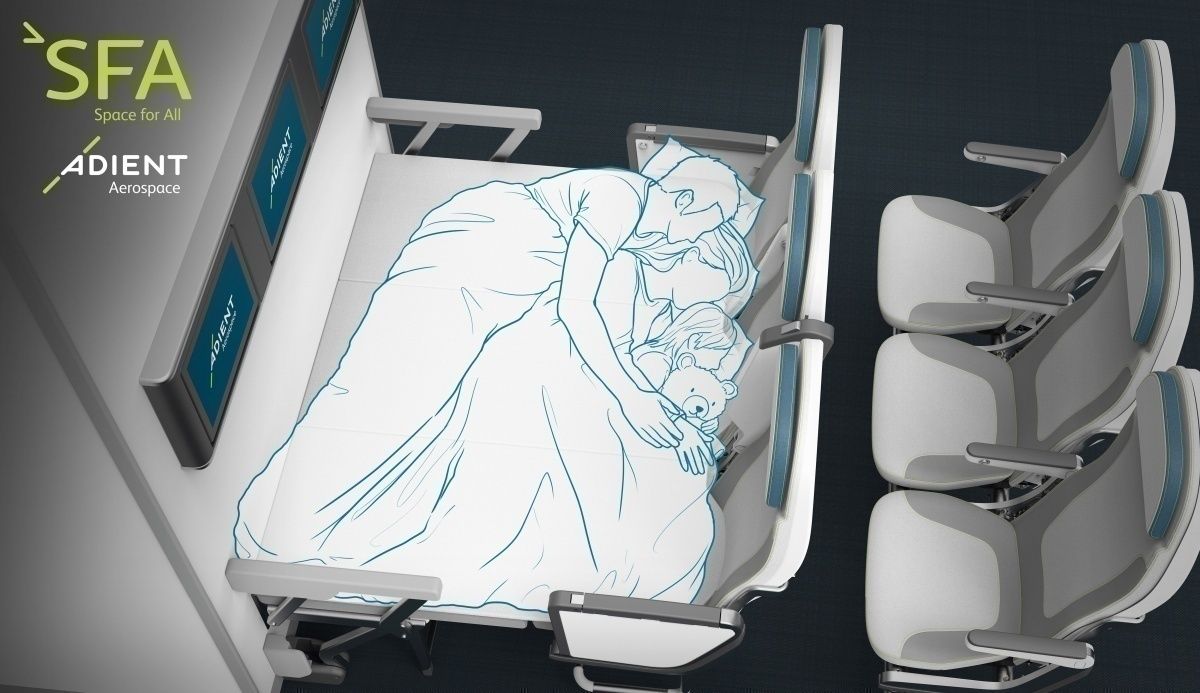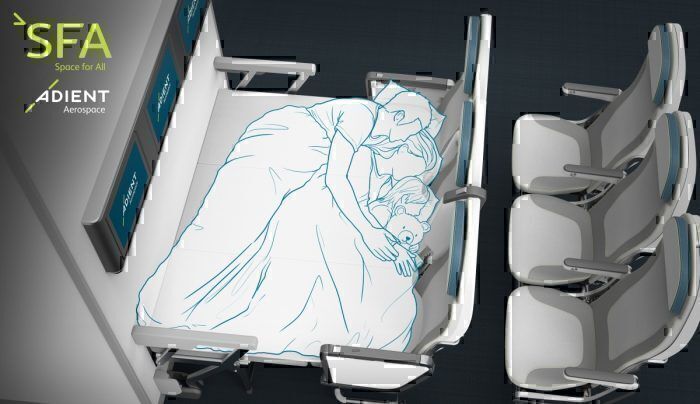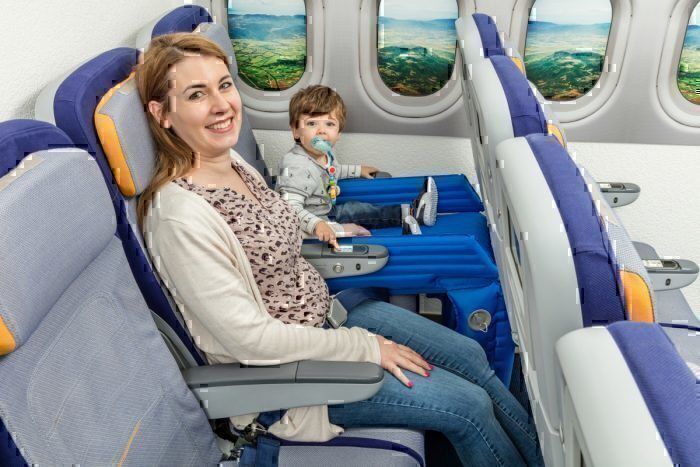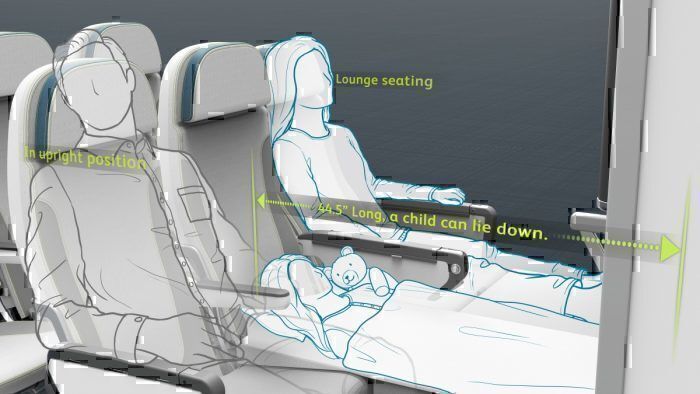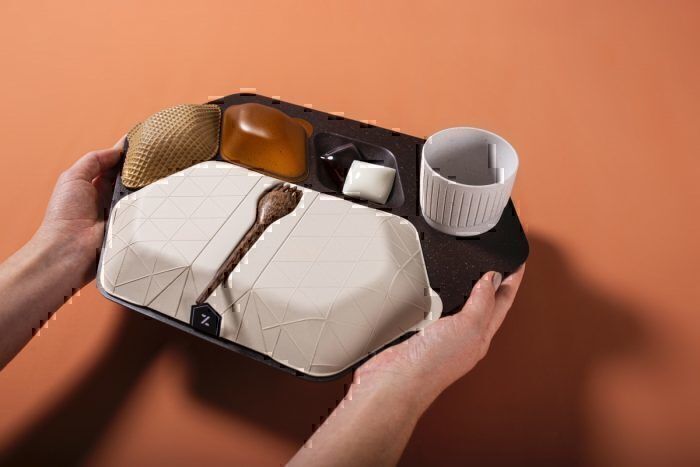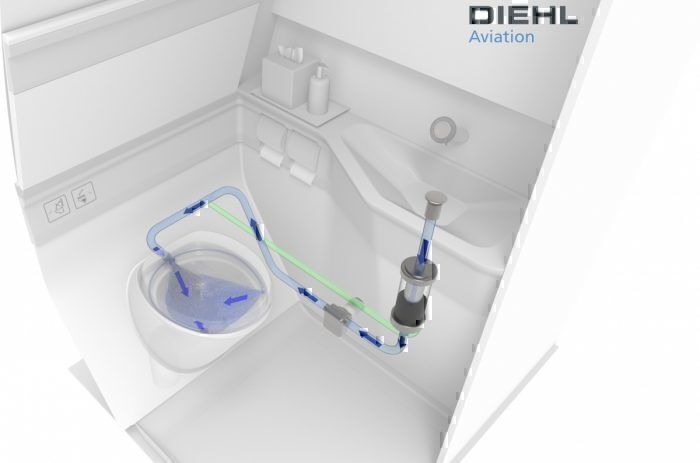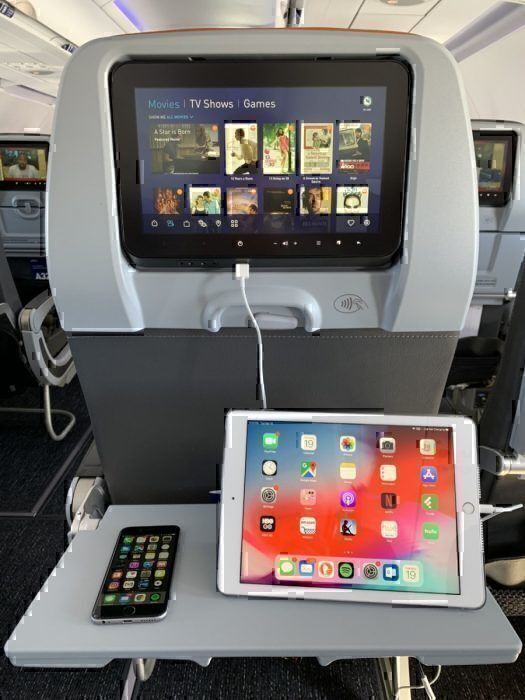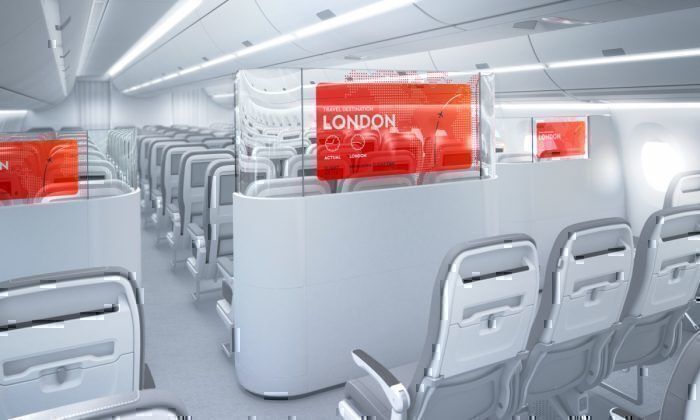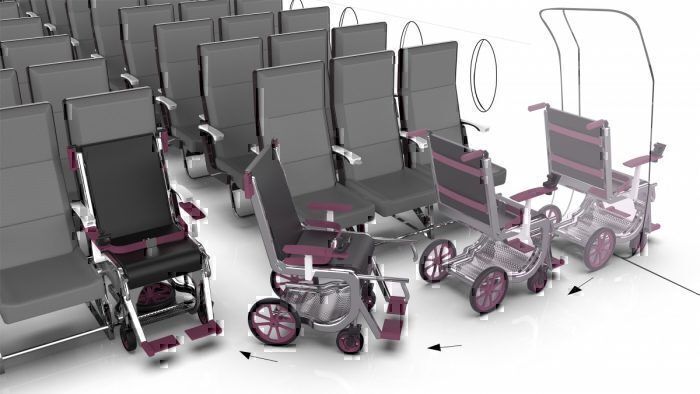We’ve already highlighted some pretty cool innovations in the world of future cabin design, such as the Zero G flight attendant seat and the collapsible economy beds. But this year’s Crystal Cabin awards bring us far more than just those products. Let’s take a look at some of the biggest trends and future design themes that are emerging for the aircraft cabin of tomorrow.
Something for the family
Designers are working hard to make air travel more family-friendly, particularly in the economy cabin. Those who haven’t traveled with children might be unaware of some of the challenges that flying with small people can bring. Clearly, these designers are seasoned pros, as the ideas they’ve come up with go a long way to solving some of the biggest bug-bears for the modern mum and dad.
One such development is the Junior Comfort Seat. Developed by Aircraft Innovations, this seat is a bit like the child booster seats for road vehicles, which are mandatory in many countries. The aircraft seat makes it more comfortable and safer for children to travel on aircraft, as its extended leg rest prevents small children from falling into the footwell. It inflates in moments and because it’s inflatable, each seat adds only 1kg to the weight of the aircraft.
Years ago, children were allowed to sleep on the floor under their parent's feet. While I’m old enough to remember doing this more than once, modern safety protocol forbids this from happening any more.
Adient Aerospace has come up with a solution for this that they call the ‘Space For All’. Designed to be installed in the bulkhead row, this concept uses an extending mechanism that comes out from the lower bulkhead wall, giving each passenger a flat surface for lounging. With all three deployed, passengers can create a ‘double bed’ of some 17 sq./ft to allow adults and kids to rest and sleep together.
The environment
One of the top priorities on all of aviation’s agenda is to reduce the environmental impact of flights. From going carbon neutral to reducing the amount of waste generated, airlines are doing what they can to minimize the negative effects of flying.
We previously mentioned Priestman Goode and their Zero Waste innovation, so were unsurprised to find it nominated for a Crystal Cabin Award. The ZERO Economy meal tray uses no plastic at all, instead choosing edible, biodegradable and compostable materials. They say it weighs no more than the current trays, and say that it is pre-empting countries banning single-use plastics and giving airlines an easy solution.
Of course, it’s not just waste that airlines are looking to get to grips with. Wasting water is also high on the agenda, and aerospace giant Diehl Aviation knows this. Its Greywater Reuse Unit takes the handwashing water from the sink and uses it to flush the toilet. This saves precious drinking water from simply being flushed away, with Diehl claiming a 250kg weight of water saying on a typical Boeing 787.
Ensuring a comfortable and entertaining flight
JetBlue is well known as a disruptor of inflight entertainment. It was the first airline to put seatback entertainment screens in every seat, and remains one of only a handful of airlines capable of offering free WiFi to all passengers. Now, it says it’s bringing the comforts of your living room to 35,000 feet.
The JetBlue Multi-Screen experience means you can connect on board with multiple devices, including the seatback screen, and enjoy content from SHOWTIME, Spotify, INSCAPE and PressReader while on board, all at the same time if you wish!
Those between-class dividers could be getting a bit of a makeover soon, as AERQ is proposing a 6.6mm thin, state of the art OLED display to go there instead. This highly transparent yet vividly colored screen can display a moving map, inflight information, advertisements or whatever else the airline chooses. Pretty cool.
But probably the coolest thing we’ve seen so far is the ROW 1 Airport Wheelchair System from Irish designer Ciara Crawford. Wheelchair users often have a tough time on flights, having to transfer from their chairs to passenger seats for the flight, and then stay there until it lands again. Toilet breaks can be awkward, to say the least.
Crawford has come up with a design which will allow users not only to sit comfortably on the aircraft, but also to retain some level of dignity and self-reliance. The specially designed wheelchair can be used by passengers moving around the terminal, then simply driven onto the aircraft and strapped into the existing aircraft seat. In my view, anything that makes travel more accessible for all is a big winner.
What’s your favorite cabin innovation? Let us know in the comments.

